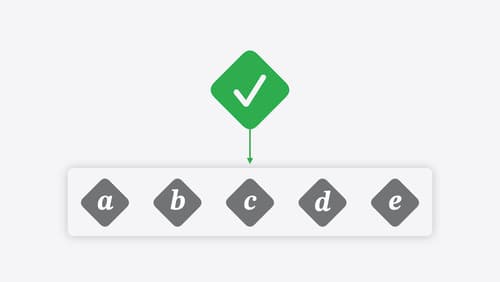how can i move swift testing
Asked on 2024-07-31
1 search
To move your Swift testing from XCTest to the new Swift Testing framework, you can follow these steps:
-
Add a Test Bundle Target:
- If you haven't written tests before, start by adding a test bundle target to your project. In Xcode, choose
File > New > Target, then search forUnit Testing Bundlein the test section. Swift Testing is the default choice for this template in Xcode 16. (Meet Swift Testing)
- If you haven't written tests before, start by adding a test bundle target to your project. In Xcode, choose
-
Understand the Differences:
- Swift Testing uses the
@Testattribute to denote test functions explicitly, unlike XCTest which uses method names starting withtest. - Swift Testing supports more kinds of functions, including instance methods, static methods, and global functions.
- It also supports traits for specifying information per test or per suite and takes a different approach to parallelization using Swift concurrency. (Meet Swift Testing)
- Swift Testing uses the
-
Migrate Existing Tests:
- For existing XCTest methods, you can consolidate similar structured tests into one parameterized test in Swift Testing.
- For XCTest classes with only one test method, consider migrating them to a global test function.
- Avoid calling XCTest assertion functions from Swift Testing tests and vice versa. (Meet Swift Testing)
-
Run Tests:
- You can run tests from the terminal by typing
swift test. This command runs both XCTest and Swift Testing tests, showing pass and fail results with detailed failure messages. (Meet Swift Testing)
- You can run tests from the terminal by typing
-
Utilize Parallel Testing:
- Swift Testing runs tests in parallel by default, which can reduce the time it takes to run your tests. It uses Swift concurrency features, allowing tests to run as fast as possible. (Go further with Swift Testing)
-
Handle Asynchronous Conditions:
- When writing concurrent test code, you can use the same concurrency features in Swift as in your production code. The
awaitkeyword works the same way, suspending a test and allowing other test code to keep the CPU busy while work is pending. (Go further with Swift Testing)
- When writing concurrent test code, you can use the same concurrency features in Swift as in your production code. The
For more detailed guidance, you can refer to the sessions "Meet Swift Testing" and "Go further with Swift Testing" from WWDC 2024.

Platforms State of the Union
Discover the newest advancements on Apple platforms.

Go further with Swift Testing
Learn how to write a sweet set of (test) suites using Swift Testing’s baked-in features. Discover how to take the building blocks further and use them to help expand tests to cover more scenarios, organize your tests across different suites, and optimize your tests to run in parallel.

What’s new in Swift
Join us for an update on Swift. We’ll briefly go through a history of Swift over the past decade, and show you how the community has grown through workgroups, expanded the package ecosystem, and increased platform support. We’ll introduce you to a new language mode that achieves data-race safety by default, and a language subset that lets you run Swift on highly constrained systems. We’ll also explore some language updates including noncopyable types, typed throws, and improved C++ interoperability.
